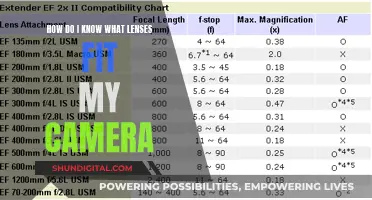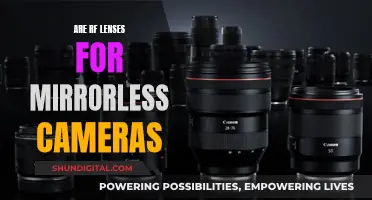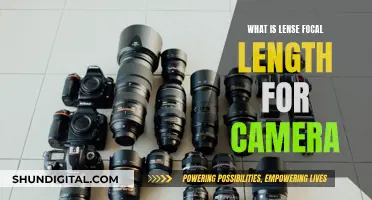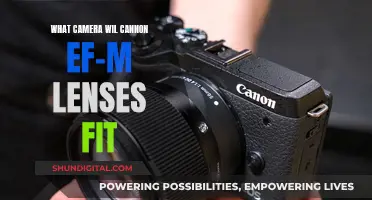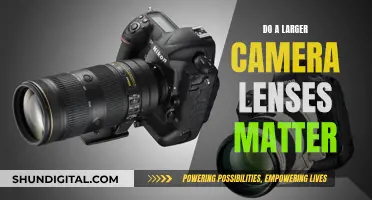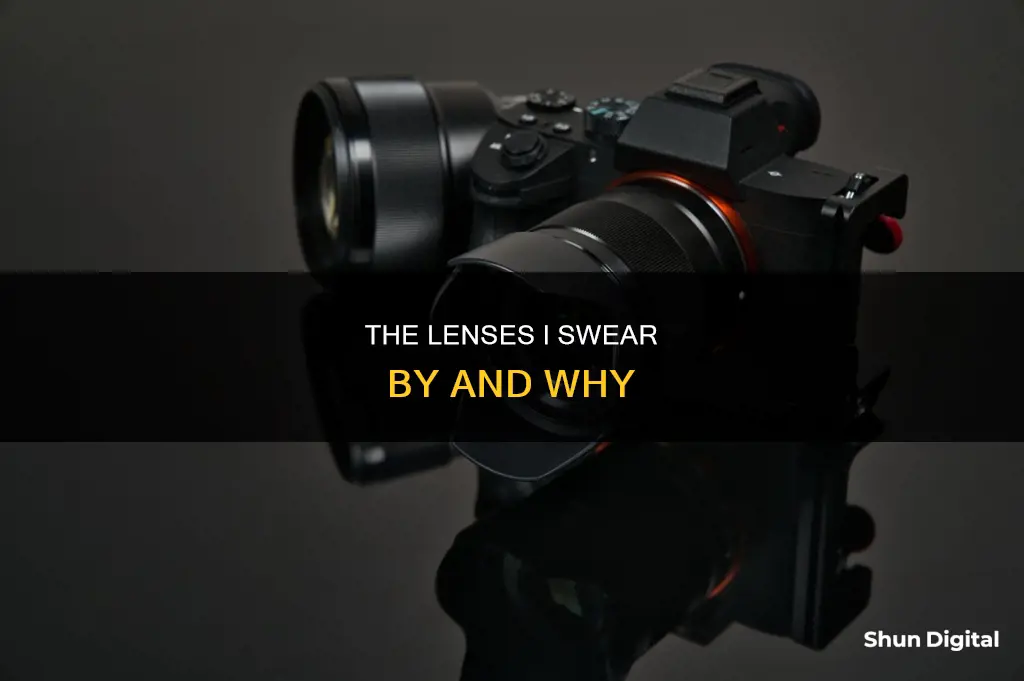
Choosing the right lenses for your camera bag is essential to capturing amazing shots. While kit lenses are often bundled with cameras, they rarely achieve the camera's true potential. There are several lenses that photographers should consider adding to their bag to enhance their photography skills and capture stunning images.
A wide-angle lens is perfect for landscape photography and shooting large architecture. It allows you to fit more of the scene into your shot, giving an expansive view of the world around you. It is also useful for shooting in tight or confined spaces.
A standard zoom lens, ranging from 24mm to 70mm, is versatile and can be used for various shots, from portraits to street photography.
Telephoto lenses are ideal for capturing distant objects and animals, as they have a long reach. They are commonly used for wildlife and sports photography.
A macro lens is designed for capturing close-up shots of small objects, such as flowers and insects, with extreme detail.
Fisheye lenses offer a unique perspective by providing a 180-degree view, resulting in creative and distorted shots.
Portrait lenses, typically with a focal length between 85mm and 135mm, are excellent for blurring out the background and creating stunning portraits.
Tilt-shift lenses allow you to tilt and shift the plane of focus, blurring specific parts of the scene while keeping others in sharp focus, adding a creative touch to your images.
Prime lenses, with their fixed focal length and wide maximum aperture, are great for achieving a shallow depth of field, making them popular for portrait photography.
Lastly, specialty lenses offer a wide angle of view, allowing you to capture creative shots and experiment with different looks and feels.
Having the right lenses in your camera bag can elevate your photography to the next level, enabling you to capture a variety of subjects and scenarios with enhanced quality and creativity.
| Characteristics | Values |
|---|---|
| Wide-angle lenses | Used for landscape photography, capturing large architecture shots, tight or confined spaces |
| Standard Zoom Lens | Capturing a wide variety of shots, from portraits to street photography |
| Telephoto lenses | Capturing distant objects and animals, wildlife photography, sports photography |
| Macro lens | Capturing close-up shots of small objects, such as flowers, insects, and other tiny creatures |
| Fisheye lenses | Capturing creative and distorted shots |
| Portrait lenses | Capturing stunning portraits of people |
| Tilt-shift lenses | Capturing landscape shots with an artistic look |
| Prime lenses | Capturing shots with a shallow depth of field |
| Specialty lenses | Capturing shots with a unique look and feel |
What You'll Learn

Wide-angle lenses for landscape photography
Wide-angle lenses are a staple in the kit bag of any landscape photographer. Their extensive field of view makes it possible to capture sweeping vistas, and they are particularly useful when you want to capture a grand landscape with many features in a single shot. They are also ideal for astrophotography, where you want to capture both a foreground and a lot of sky.
When choosing a wide-angle lens, the first decision to make is whether to go for a prime (fixed focal length) or a zoom lens. If ultimate image quality is the goal, prime lenses have traditionally been the go-to option. However, modern zoom lenses are now so good that any loss in image quality is barely noticeable, and the flexibility they offer makes them worth considering. With a zoom lens, you can find the ideal position to shoot from and then adjust the framing to get your desired shot.
When it comes to the maximum aperture, you will typically have the option of a faster lens (e.g. f/2.8) or a slower lens (e.g. f/4). The faster lenses tend to be more expensive, heavier, and pitched towards professional photographers. They are ideal for low-light conditions and astrophotography, but unless you plan on doing a lot of night-time shooting, the slower lenses will likely be sufficient for your needs.
- Samyang 12mm f/2.8 ED AS NCS diagonal fish-eye: This lens offers little chromatic aberration and a unique, freaky bending of the horizon when pointed upwards.
- Canon EF-S 10-22mm F/3.5-4.5 USM: This lens is a great option for landscape photography on a Canon APS-C camera. While it may not be the sharpest or fastest lens, its relatively low price point makes it a perfect candidate for landscape photography.
- Samyang 14mm F/2.8 AF Sony FE: This lens offers the same sharpness and autofocus as other Samyang lenses, but at a more affordable price point.
- Sigma 14-24mm F/2.8 DG HSM Art: This lens is known for its flawless image quality, and it also allows you to focus a little closer than the Nikon AF-S Nikkor 14-24mm F/2.8G ED.
- Nikon AF-S 14-24mm F/2.8G ED: This lens is a good choice for wide-angle landscape photography, offering a slightly tighter frame than some of the other options.
- Tamron SP 15-30mm F/2.8 Di VC USD: This lens offers a good zoom range and a relatively bright aperture, although there may be issues with decentering.
- Samyang 24mm F/1.4 ED AS IF UMC: Arguably the best lens for nightscape photography, this lens offers no optical defects or aberration when used wide open.
In addition to the specific lenses mentioned above, Nikon, Canon, and Sony all offer a range of wide-angle lenses that are worth considering. Ultimately, the best wide-angle lens for you will depend on your specific needs and budget, so be sure to read reviews and compare different options before making your purchase.
Why Are Camera Lenses Round?
You may want to see also

Standard zoom lenses for portraits and street photography
The 24-70mm lens is a versatile option for portraits and street photography. On the wide end, you can shoot landscapes and interiors, and on the standard range, you can capture images that look similar to what the human eye sees. This lens is also ideal for getting close-up shots, such as tightly framed portraits, without having to get too close to your subject.
The 24-70mm lens is available in various options, from budget-friendly to professional-grade glass, and many of them feature large apertures. This allows you to create excellent portraits with blurry backgrounds, shoot in low-light conditions, and capture high-quality indoor shots. Additionally, these lenses are often lightweight, making them a great choice for travel photography.
Another benefit of the 24-70mm lens is its robustness. While it's not recommended to knock your lenses around, the 24-70mm lens can withstand the bumps and bruises of daily use. Its versatility, ease of use, lightweight design, and affordable options make it a favourite among photographers, often becoming their go-to lens.
While the 24-70mm lens is a fantastic choice for portraits and street photography, it's important to note that it may not be as versatile as wider lenses when it comes to adding context to your photographs or providing a unique perspective. However, with its standard zoom range, the 24-70mm lens will enable you to capture stunning images that showcase your creativity and skill.
Best Camera Lenses Compatible with EF Mounts
You may want to see also

Telephoto lenses for wildlife and sports photography
Telephoto lenses are essential for wildlife and sports photography, allowing photographers to get up close and personal with their subjects without disturbing them. When choosing a telephoto lens, there are several key features to consider, including focal length, aperture, image stabilization, weight, and compatibility.
Focal Length
The focal length of a lens determines how close you can get to your subject without physically moving. For wildlife and sports photography, a longer focal length is ideal, typically 200mm and beyond. This allows you to capture crisp and detailed shots from a safe distance.
Aperture
Aperture refers to the opening of the lens that lets in light. It is described using f-numbers like f/2.8 or f/4, with smaller numbers indicating a larger opening. A wider aperture is beneficial for low-light conditions or capturing fast-moving subjects. It also helps create a shallow depth of field, making your subject stand out against a beautifully blurred background.
Image Stabilization
Image stabilization (IS) is a crucial feature, especially when shooting handheld. It helps prevent blur and ensures sharp images even in low light or when your hands are unsteady. Some lenses offer built-in image stabilization, while others may rely on in-body stabilization or a tripod.
Weight and Size
Telephoto lenses can vary significantly in weight and size. Longer and faster lenses often provide better image quality but can be heavier and more cumbersome to carry, especially on hiking or trekking trips. Consider the trade-off between image quality and portability when choosing a lens.
Compatibility
Compatibility is essential when choosing a lens. Ensure that the lens is compatible with your camera brand and model, including any necessary adapters or converters. Additionally, check the lens's minimum focusing distance to ensure it suits your photography needs.
Recommended Telephoto Lenses
- Canon EF 100-400mm f/4.5-5.6L IS II USM: A versatile zoom lens with advanced image stabilization and fast autofocus.
- Nikon AF-S Nikkor 200-500mm f/5.6E ED VR: An affordable option with a versatile zoom range, good image quality, and fast autofocus.
- Sony FE 200-600mm f/5.6-6.3 G OSS: Offers impressive reach, high-resolution images, and a fast autofocus system.
- Tamron SP 150-600mm F/5-6.3 Di VC USD: A budget-friendly option with a wide zoom range, sharp images, and quiet autofocus.
- Sigma 150-600mm f/5-6.3 DG OS HSM Contemporary: A lightweight and versatile lens with excellent image quality, fast autofocus, and weather sealing.
Understanding Camera Lenses: Objective Focal Lengths Explained
You may want to see also

Macro lenses for close-up shots of small objects
Macro lenses are a must-have for any photographer looking to capture the intricate details of small objects. Here are some of the best options for your camera bag:
Canon RF 85mm F2 Macro IS STM Lens
This lens is perfect for portrait, animal, and insect photography. It offers a 0.5x focus capability, allowing you to get incredibly close to your subject, with a minimum focusing distance of just 35cm. The longer focal length means you can capture macro images without having to get too near, which is especially useful for insects as it won't alarm them. It also features a silent STM motor and a maximum aperture of f/2, making it ideal for low-light photography.
Canon RF 35mm F1.8 IS Macro STM Lens
This lens magnifies your subject to 1:2, offering versatility for macro photography. The 35mm focal length is great for producing large fine art prints. It also has 5 stops of image stabilization and an f/1.8 aperture, ensuring sharp and blur-free images even in low light. Additionally, the Lens Control Ring gives you creative control over your final image.
Canon RF 24mm F1.8 Macro IS STM Lens
This lightweight prime lens combines a wide-angle focal length with an incredibly fast f/1.8 aperture, making it perfect for low-light conditions. It can focus as close as 14cm away at a magnification of 0.5x, making it ideal for capturing the natural world, including plants, flowers, and textures, as well as close-up images of their context and environment. The fast aperture and 5-Stop Image Stabilizer ensure sharp images even in low light.
Canon EF-M 28mm F3.5 Macro IS STM Lens
This lens is an excellent entry point into APS-C macro photography. It offers 1.2x magnification, allowing you to capture incredible details of the natural world, food, and more. It features Macro Lite, which illuminates your subject using two tiny, discreet lights, reducing shadows caused by the photographer. This lens is popular for insect, food, animal, and product macro photography.
Canon RF 100mm F2.8L Macro IS USM Lens
This lens is built for professionals seeking creativity. It offers class-leading 1.4x magnification, perfect for capturing insects, reptiles, portraits, and more, with stunning subject detail and emotive bokeh. The Nano USM motor is silent, so it won't scare away animals, and the fast f/2.8 aperture encourages low-light creativity. Additionally, the Spherical Aberration Control setting lets you adjust the depth of field for the desired bokeh effect.
Canon EF 100mm F/2.8L Macro IS USM Lens
This lens is a great option for getting extremely close to your subjects with a DSLR. It combines a Hybrid Image Stabilizer with angle and shift detection, resulting in sharper images at close focusing distances. The 100mm focal length means you don't need to be too close to subjects like insects and animals, reducing the risk of startling them. The built-in focus limiter increases autofocus speed, making it ideal for fast-moving subjects.
Telephoto Camera Lenses: Capturing Faraway Subjects Clearly
You may want to see also

Prime lenses for portrait photography
Prime lenses are a great choice for portrait photography, offering wider maximum apertures, sharper images, and better overall image quality than zoom lenses. They also tend to have faster maximum apertures, allowing for beautiful out-of-focus backgrounds and better low-light performance.
Sigma 85mm f/1.4 DG HSM Art
The Sigma 85mm f/1.4 is a versatile lens, compatible with Nikon, Canon, and Sony camera bodies. It offers exceptional speed and sharpness, along with smooth and attractive bokeh. Its relatively low price and high quality make it a popular choice among portrait photographers.
Tamron SP 85mm f/1.8 Di VC USD
The Tamron SP 85mm f/1.8 is an excellent choice for portrait photography, offering speed, sturdy build quality, and accurate focusing. It has a fast f/1.8 maximum aperture, allowing for smooth background blur. Additionally, it features weather-proof sealing, ensuring consistent performance in various shooting conditions.
Sigma 50mm f/1.4 DG HSM
The Sigma 50mm f/1.4 is another impressive lens from the Sigma Art series. With its f/1.4 maximum aperture, this lens excels in low-light conditions, and its ultrasonic focus motor ensures smooth, quiet, and accurate focusing. It is compatible with Sony E-mount cameras.
Nikon AF-S NIKKOR 85mm f/1.8G
The Nikon 85mm f/1.8 is a budget-friendly option that delivers reliable performance. It features a fast maximum aperture, good bokeh at wider apertures, and consistently sharp images. Its silent focus motor makes it ideal for video recording as well as photography.
Canon EF 135mm f/2L USM
The Canon EF 135mm f/2 is a popular choice among portrait photographers, offering a decent telephoto feature and exceptional bokeh. Its fast and silent autofocus, along with its comfortable handling, make it a favourite for capturing stunning portraits.
Canon EF 35mm f/1.4L II USM
The Canon EF 35mm f/1.4 is a versatile lens, perfect for environmental portraits, weddings, and events. With its fast f/1.4 maximum aperture and wide field of view, it allows for creative framing and excellent low-light performance. Its silent autofocus motor ensures discreet shooting.
Canon EF 50mm f/1.2L USM
The Canon EF 50mm f/1.2L is a unique offering, as it is the only 50mm lens with an f/1.2 maximum aperture, making it highly capable in low-light situations. It features weather-resistant sealing and high-quality glass, delivering exceptional performance and image quality.
Sigma 35mm f/1.4 DG HSM Art
The Sigma 35mm f/1.4 is another impressive lens from the Sigma Art series, ideal for environmental and street portraits. It features additional glass elements and a hypersonic focus motor, ensuring sharp and precise focusing. Its fast maximum aperture and quiet autofocus make it a versatile choice.
GoPro Hero 6: Are Older Lenses Compatible?
You may want to see also
Frequently asked questions
Wide-angle lenses are essential for landscape photography and capturing large architecture shots. A wide-angle lens is also great for shooting in tight or confined spaces.
Standard zoom lenses are versatile and can be used for capturing a wide variety of shots, from portraits to street photography. They typically range from 24mm to 70mm, giving you various focal lengths to choose from.
Telephoto lenses are ideal for capturing distant objects and animals, as they have a long reach. They are commonly used for wildlife and sports photography. On the other hand, wide-angle lenses are perfect for shooting in tight spaces and capturing expansive views.


